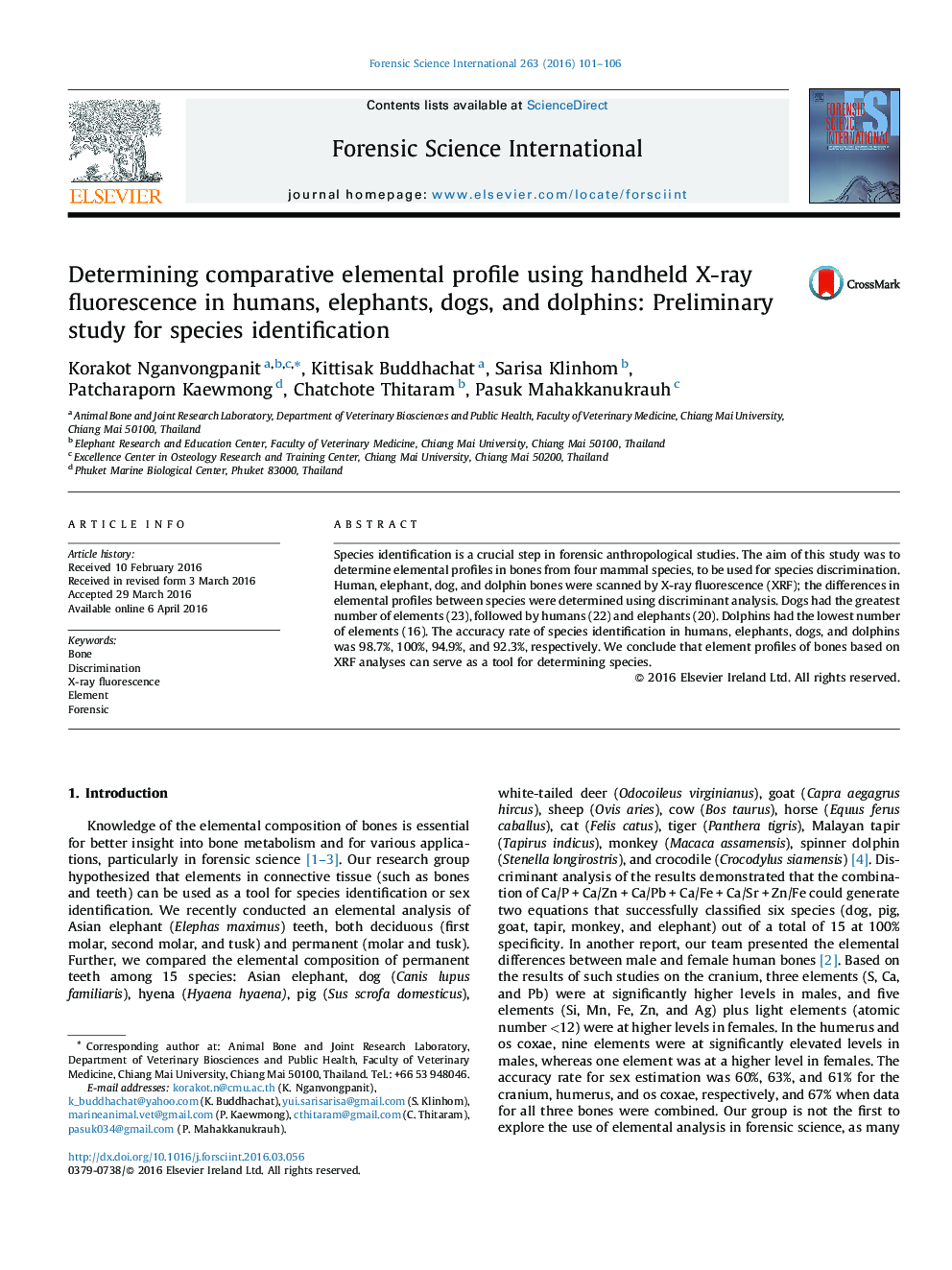| Article ID | Journal | Published Year | Pages | File Type |
|---|---|---|---|---|
| 95143 | Forensic Science International | 2016 | 6 Pages |
•Elements can be considered for species identification using bone samples.•X-ray fluorescence (XRF) analysis is a nondestructive technique for determining elemental profiles.•XRF can discriminate bone samples from four mammal species using elemental profiles.
Species identification is a crucial step in forensic anthropological studies. The aim of this study was to determine elemental profiles in bones from four mammal species, to be used for species discrimination. Human, elephant, dog, and dolphin bones were scanned by X-ray fluorescence (XRF); the differences in elemental profiles between species were determined using discriminant analysis. Dogs had the greatest number of elements (23), followed by humans (22) and elephants (20). Dolphins had the lowest number of elements (16). The accuracy rate of species identification in humans, elephants, dogs, and dolphins was 98.7%, 100%, 94.9%, and 92.3%, respectively. We conclude that element profiles of bones based on XRF analyses can serve as a tool for determining species.
